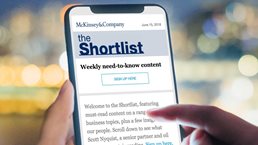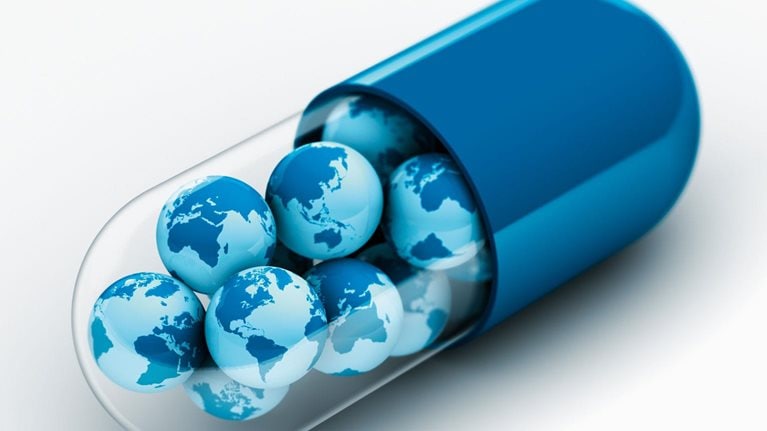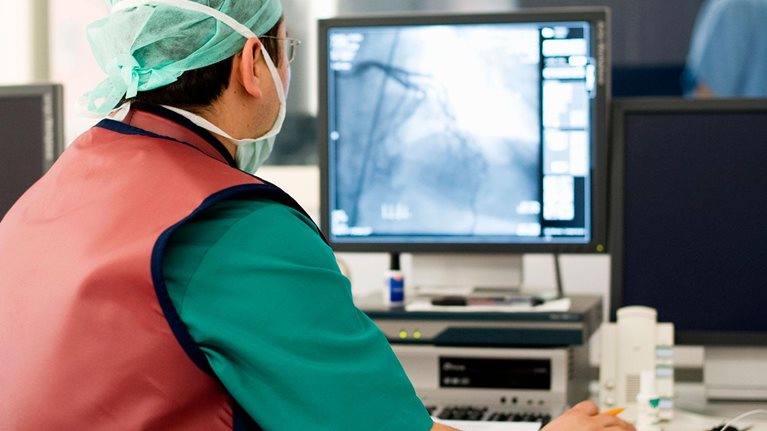With some of the world’s best-known biologics continuing to face patent expiration in the coming years, the biosimilars market is set for continued growth. We estimate sales will potentially triple in size to $15 billion by 2020, or closely thereafter. The European market is expected to continue to mature and the US offers opportunities, despite many practical challenges. On both sides of the Atlantic, however, downward price pressure suggests competition will be intense.
In such a dynamic landscape, there are five top-of-mind themes set to shape the industry over the coming months:
- Manufacturers will continue to increase focus in fast-growing Europe, while the US keeps progressing slower with the promise of enormous potential.
- Global price declines and rising competition are expected to continue creating challenges in producing sustainable returns.
- Pricing strategy and value management are an increasingly important requirement.
- Companies need to adopt agile go-to-market strategies to compete locally.
- Lowering development costs via innovation is an essential discussion to accelerate to ensure a sustainable future.
We highlight here the imminent launch of adalimumab biosimilars in Europe and developments in the US, which will be critical to the industry’s prospects in 2018/19. We also provide a perspective on the fact that many companies rely on the promise of rising US demand, effectively growing the global market and offsetting development costs that can range between $100 and $300 million.
A key differentiator in the coming period will be the ability to design and implement new development and commercial models. These will help offset the impact of price declines and rising competition, and ultimately could play a crucial role in creating the biosimilar blockbusters of the future.
1. Growth in Europe and an eye on the US: Market development
European sales of biosimilars are growing, amid increasing acceptance that they are equal to patented drugs in terms of safety, efficacy, and immunogenicity.1 The market was worth around $2.5 billion in 2017, comprising 36 approved biosimilars by May 2018, and we expect it to grow closer to $4 billion by the end of 2018, bolstered by biosimilars of at least five new reference biologics, including high-value molecules such as adalimumab and trastuzumab.2 Some geographies, including the Nordics and UK, are particularly active; rituximab biosimilars accounted for 70 percent and 80 percent respectively of those markets in early 2018, just two years after launch.3 In our experience working in the field, we see demand is also accelerating elsewhere in Europe; Infliximab biosimilars comprised as much as 30 percent of the French market in 2018, compared with less than five percent three years previously. The published literature on biosimilars is also mounting. A 2018 literature review compiled 90 studies which looked at switching to biosimilars and found that the great majority of the publications did not report any differences in immunogenicity, safety, or efficacy after switching.4
Still, progress across the region is uneven. Uptake of etanercept biosimilar Benepali is slower than that of infliximab equivalents. In France, it has captured less than 5 percent of the market.5 There is generally weaker demand for retail products and self-injectable biologics, likely reflecting lower levels of awareness and “pressure” that can be applied in those segments (beyond tenders) compared with hospital-administered products (Exhibit 1).6

US contrast
In contrast to accelerating European growth, the US market remains fairly flat. While 11 biosimilars have Food and Drug Administration (FDA) approval as of June 2018, only three are actively marketed, while the others are either tied up in patent disputes (for example, Amjevita [adalimumab]) or are awaiting patent expiry (for example, Erelzi [etanercept])7 Given ongoing litigation, and with innovators coming to agreements with originators, time-to-market is likely to be extended. One example was AbbVie’s recent agreement with Amgen and Samsung in respect of Humira biosimilars. AbbVie will begin granting country-by-country licenses to both companies in Europe, with an expected US license delayed until mid-2023.8
Where biosimilars are marketed in the US, uptake remains low. Infliximab biosimilars have a less than 6 percent market share,9 amid a range of challenges including contracting provisions (and those related to rebates) that inhibit new entrants, limited co-pay differences and a lack of incentive mechanisms for physicians. Vas Narasimhan, CEO of Novartis, has been outspoken on the topic of rebates, recently saying, “The rebate wall stifles competition by blocking biosimilar access and uptake. We need to tear down the rebate wall and create better contracting models that help patients access cost-saving biosimilar treatments.”10
Another major challenge has been management of chronic specialties, where there has been a historical unwillingness to directly interchange products, for example for treatment of multiple sclerosis. As the next wave of biosimilars (for example, Humira) comes to the US, companies will need to consider this trend as well as the question of how they approach rebates.
FDA Commissioner Dr. Scott Gottlieb has also expressed a view on the need to evolve market economics, recently telling a public meeting, “While we see a growing number of sponsors pursuing biosimilar development programs, the economics of development are currently unstable; and the pipeline of biosimilar products that we hope for could be dramatically affected by the weakening of market incentives to bring these products to patients.”11
US regulatory developments may create tailwinds
In the US, there are several regulatory efforts in progress that relate to biosimilars. In January 2017, the FDA released its first draft guidance on demonstrating interchangeability of biosimilars. In April of this year, the FDA referenced policies in forthcoming revised guidance, including a lower bar for demonstrating interchangeability and a limit on the variability of branded biologics, which the health authorities said would reduce the size of studies necessary to demonstrate biosimilarity.
The FDA also discussed refreshed guidance on communication of pharmaco-economic data between biosimilar manufacturers and intermediaries including PBMs, hospital-based pharmacies, and therapeutics committees: “I think we’re going to go beyond where we did in the original guidance and create a more robust framework for those conversations to happen in an unimpeded way.”12 The discussion on whether comparative originators for the trials need to be sourced from the US (current guidance) or globally is still open.
Would you like to learn more about our Life Sciences Practice?
Still, four biosimilar manufacturers have received Complete Response Letters for distinct products in the past two months alone, potentially suggesting the FDA’s expectation for clinical evidence may not be fully aligned with manufacturers.13 Gaining further clarity on approval thresholds will serve to increase success rates and, ultimately, approvals. There is also continuing uncertainty on who makes the call on when a drug can be interchanged (that is, prescribers or others). The FDA has issued interchangeability guidance, but uncertainty remains at all levels of the system—including state pharmacy laws and local prescribers. There is also an unresolved debate over whether comparative originators for trials need to be US-sourced, as is the case under current guidance.14 15 16
One key variable in driving uptake of biosimilars will be the new reimbursement rules set forth by The Centers for Medicare & Medicaid Services (CMS). In April 2018 CMS released its final rule on biosimilars for the Medicare program, announcing it would lower the maximum co-payment amount for low-income subsidy (LIS) beneficiaries for biosimilars and interchangeable biosimilars to match the lower co-pay amount required for generic and preferred multiple-source drugs. CMS estimates this policy will save substantial costs and improve “enrollee incentives to choose biosimilar and interchangeable biological products over reference biological products.”17
In May 2018 the Department of Health and Human Services issued a policy statement, referred to as the “HHS Patient Blueprint,” which includes language in support of biosimilars: “FDA will issue new policies to improve the availability, competitiveness, and adoption of biosimilars as affordable alternatives to branded biologics. FDA will also continue to educate clinicians, patients, and payors about biosimilar and interchangeable products as we seek to increase awareness about these important new treatments.”18 The dynamics of the US market are changing as the regulatory environment evolves.
The US is undoubtedly a critical market but given the many unpredictable factors at play there is uncertain potential to unlock value. For individual players this brings two key implications:
- In the scenario of a weak or suboptimal US market, the current business model will be undermined given that it, to a large extent, relies on growing global demand spearheaded by the US to offset development costs that range from $100 to $300 million.
- Deployment of commercial and medical resources (for example, in the form of a field force and/or patient support programs) in the US is high risk: requiring meaningful investment in exchange for an uncertain return.
Therefore, flexibility and agility in go-to-market approach are critical. Our recommended response is to “get ahead of the game,” by identifying partners across the spectrum to pilot distribution, delivering provision in higher-impact segments and channels. Companies should also take independent action to leverage advanced analytics using publicly available data to generate insights into the market, segments, and channels.
2. Pricing and competition—the game is on in Europe
The biosimilar market is already under pressure from the dual and related impacts of price discounting and competition, particularly in Europe. A trend that started in the Nordics has spread to the UK, France, Germany, Spain, and Italy, with drug makers offering up to 70 percent discounts, albeit with significant variations between countries and within countries.
Two factors are at play: First, buyers are becoming increasingly sophisticated, often coordinating tenders to boost competition between suppliers and facilitating switching via robust education initiatives or trials and experience in market. Also, new entrants are competing aggressively to capture share, with makers of Flixabi, for example, challenging the early leads of Inflectra and Remsima.
Amid rising competition, there is little sign that pervasive discounting will abate anytime soon. In fact, it is likely to accelerate, reflecting the dominance of large, high-value molecules (adalimumab [annual sales of approximately $19 billion], trastuzumab [approximately $7 billion], bevacizumab [approximately $7 billion]), which will likely attract new players to the market.19 The next wave of oncology drugs promises similar dynamics, with a high number of experienced players expected to compete for market share.
Regulatory and patent trends together have created a bunching pattern in launch dates, as early movers wait until issues are resolved. A common scenario is that two or more players enter the market for the same drug at the same time, increasing competition for tenders and contracts. It is increasingly likely, for example, that at least three players (including Amgen, Samsung, and Boehringer Ingelheim) will launch adalimumab biosimilars in some European markets in late 2018, with others likely to follow in early 2019.20 The fact that adalimumab is a core business for many companies suggests there are challenging times ahead. In response, companies must carefully manage prices, volumes and discounts at a high level of granularity as other price sensitive/low margin businesses do.
3. Pricing versus value—step-up in sophistication and management required
Pricing is a critical variable in the success of any biosimilar product. Also, the more a manufacturer optimizes for price the greater the leverage it creates in its commercial budget, which can in turn be used to improve competitive positioning, grow the business or differentiate between products (as already seen in chronic diseases requiring self-injection).

Biopharma Frontiers: What the future holds for the industry
Pricing has a direct impact on penetration, evidenced in July 2015 when Magellan Health implemented a new fee schedule for three reimbursed intravitreal anti-VEGF injectable drugs: aflibercept (Eylea), ranibizumab (Lucentis), and off-label bevacizumab (Avastin). The schedule increased reimbursement for bevacizumab, resulting in an increase of approximately 10 percent in share of sales.21
As in the generics and medtech sectors, a sound price-to-volume model (PVM) is essential in making the right tradeoffs across accounts. A strong model can support management of contracts based on a real-time understanding of the market. It can enable quick decisions and can help manufacturers calibrate risk/reward ratios, ultimately helping them free up space in their P&Ls to build an agile go-to-market approach (see Section 4).

Subscribe to the Shortlist
McKinsey’s new weekly newsletter, featuring must-read content on a range of topics, every Friday
It could make sense for large pharmaceutical companies focused on specialty care to move away from traditional unit-price maximization. In the medical products field, for example, many companies are now using advanced analytics to inform the price-volume tradeoff. In our view, leveraging analytics to drive insights via a PVM is a worthwhile investment. It is a tool which requires several critical inputs, also serving to focus the field force as to how to gather meaningful data and competitive information better. Such inputs include external data, competitor volume/pricing, formulary listings, performance metrics, transactions account segmentation, and costs (Exhibit 2). A strong data and analytics platform can also drive sales force productivity and inform financial management, forecasting, and drive critical internal discussions. Model outputs include:
- price/volume corridors per account
- real-time forward-looking P&L simulations with pricing scenarios and events (for example, lost tender/contract, lower price)
- views on ASP and ASP projection (for example, based on expected competitor entry, tender/contract timing)
- go/no-go recommendations on deviations from Average Realizable Price (ARP)
- a consistent fact base to inform pricing strategic discussions (for example, resource reallocation)

4. Agile go-to-market strategies are essential
In an intensely competitive environment, biosimilar companies are evolving into highly technical and specialized organizations. The current generation of biosimilars is far more complex than earlier generations and must be tested and launched into much more restrictive analytical and clinical environments than just a few years ago. In response, companies need to incorporate agile capabilities, comprising three key components:
- The ability to take bold decisions on where to invest and how to set up a commercial footprint. This might mean deprioritizing a large but low-price market, for example, by opting for tender agreements over a salesforce, in favor of a field footprint elsewhere, or engaging remotely and digitally.
- Rapidly trading-off resources based on dynamic market conditions. For example, reallocating resources between markets following tender outcomes or price changes.
- Partnering to capture opportunities in the periphery. Smaller markets might not warrant direct investment at current volumes and price points. A more attractive approach may be to find a strategic partner, particularly if the partner has expertise in contracting/tendering and access to key channels.
We see three commercial models—“push for land grab,” “value partner,” and “pull the end market.” The first requires companies to focus on price cuts and volume gains, and in particular to boost tender and pricing capabilities. The second involves driving budget impact at payers and providers and working on producing savings through incentives. The third is characterized by generating traction at physician and patient level.
These models all can apply but should be regarded as menu options that can be flexibly applied to local conditions. That may, for example, mean adjusting investment models across regions as incentives change, requiring flexibility around budgeting, commercial deployment, and sales/key account effectiveness. Companies should also consider diversifying organizational structures, including finding local partners, employing contracted field forces, or sharing resources.
In one example of diversification through partnership, Biogen in 2012 formed a joint venture with Samsung Bioepis (5 percent Biogen, 95 percent Samsung). The JV developed a Humira biosimilar—Imraldi—that is set to launch in Europe in October.22 Biogen’s biosimilar division is on track to make $500 million in sales this year, and the company said in April 2018 it plans to raise its stake in the JV to 49.9 percent.23
As companies plot a way forward, there is work to be done in defining specific product strategies that prioritize revenue sources, identify specific markets and indications, and make/buy decisions to take. This requires deep price-volume insight, great market intelligence, and clear investment and resource allocation planning.
5. More ideas to optimize development costs and innovate—creating a sustainable future
The biosimilar industry has developed rapidly and regulation has advanced significantly since the early 2000s with approval processes now in place in many countries. However, there may be an opportunity to further streamline the regulatory process and accelerate path to market.
One area deserving of attention is the requirement for therapeutic equivalence trials, which account for at least 75 percent of development costs. Modification of those requirements could change the landscape, especially as more players enter the market. It could also ease pressure on a limited pool of patients and investigators. However, it is important to remember why therapeutic equivalence trials are required in the first place and to ensure that no tradeoffs are made that put the public at risk with regards to safety and efficacy. As recently discussed,24 new guidance for use of bioanalytical data and pharmacokinetic/pharmacodynamic modeling data (for example, potency, immunogenicity), and introduction of lower burdens of proof in clinical settings could be areas that change the “state of play” in the future.
The industry, meanwhile, could increase investment in bioanalytical methods, optimize design and recruitment for biosimilar clinical studies, and explore options to recruit patients in markets with limited access to biologic therapies. In addition, it could explore new approaches to clinical trials, for example by placing more emphasis on real-world evidence, forming joint ventures, and employing contract research organizations. The latter can help develop market propositions, with accompanying sales and system benefits, as well as run trials.
Healthcare providers and patient advocacy groups can help drive uptake, using analytical and real-world data to boost biosimilar acceptance among prescribers and end users without the need for extensive therapeutic equivalence trials.
Streamlining the development process and reducing risks, could help dissipate headwinds currently restraining the industry. The result should be more launches, an increasingly dynamic market and a better deal for patients.

